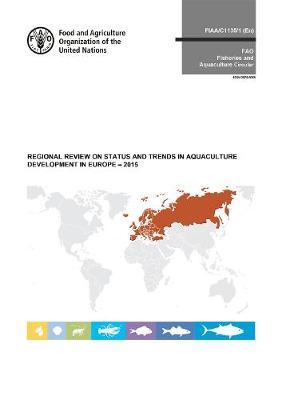FAO fisheries and aquaculture circular
1 total work
1135/1
Regional review on status and trends in aquaculture development in Europe - 2015
by Roy Clarke and John Bostock
Published 30 November 2017
In 2012, the percentage of European aquaculture production (of world total production) was 4.32 percent (2,880,641 tonnes) and the European Union (28 member organisations) contribution to world production was 1.89 percent (1,259,971 tonnes) (FAO, 2014). The European Union (EU) is the third largest seafood producer (aquaculture and fisheries) in the world and Europe is also the biggest importer of seafood products. Norway's aquaculture sector contributed 46 percent of total European aquaculture production (FAO, 2014). Aquaculture is politically recognised as having the potential to boost growth and jobs in EU coastal and inland areas with several key European policies highlighting aquaculture as being a key component in achieving economic growth and competitiveness on a global level e.g. the overall Blue Growth strategy, the reformed Common Fisheries Policy (CFP), sea basin strategies (i.e. Baltic Sea Region Strategy) etc. At the same time, as an example of the significant challenges to the growth of the sector, in the EU, there are currently over 200 directives, regulations, or other legislation that directly affect marine environmental policy and management (Boyes & Elliott, 2014) and many European national states lack a coherent national aquaculture policy. The CFP reform envisioned the development and promotion of EU aquaculture through the so-called 'open method of coordination' based on strategic guidelines, multiannual national plans prepared by the Member States and exchange of best practices. In 2013, the European Commission (EC) published the Strategic Guidelines for the Sustainable Development of EU Aquaculture (European Commission, 2013b) to assist EU Member States in defining their own national targets taking account of their relative starting positions, national circumstances and institutional arrangements.
